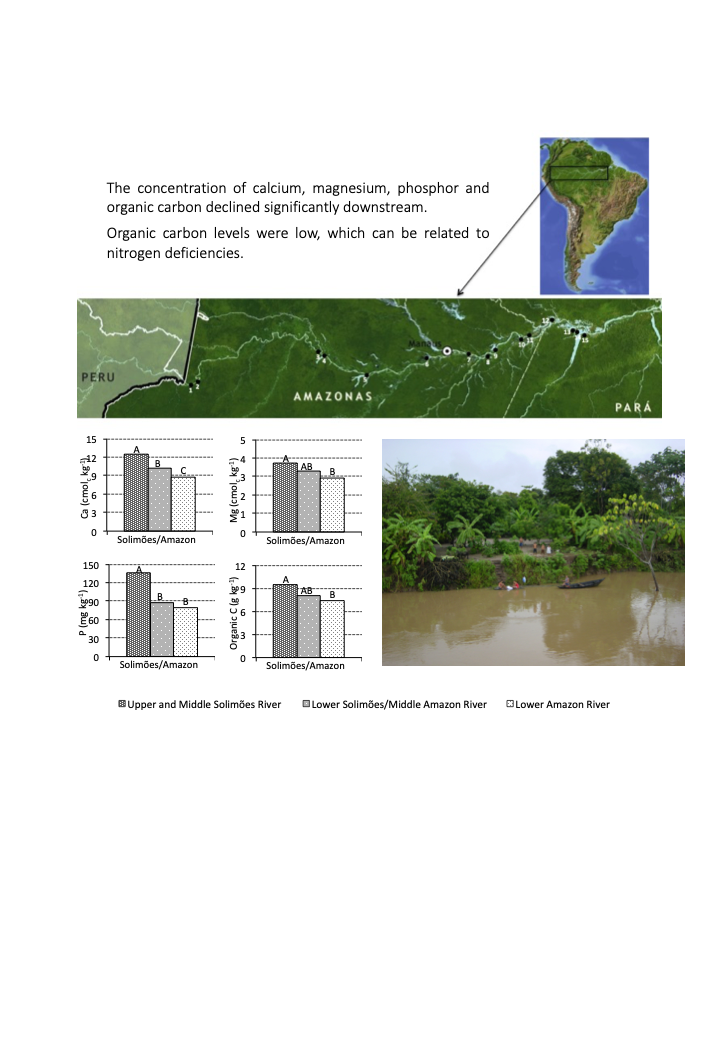Rev. Bras. Ciênc. Solo.2022;46:e0220005.
Chemical features of floodplain soils under different land-uses in the Solimões/Amazon River basin
22/Jun/2022
DOI: 10.36783/18069657rbcs20220005
Graphical Abstract

Highlights
Organic carbon levels were low, which can be related to nitrogen deficiencies.
Soils under forest had elevated acidity and high levels of exchangeable aluminum.
Low level of available potassium may limit agriculture in the floodplain.
Calcium, Mg, P, N and organic carbon contents declined significantly downstream.
ABSTRACT
Most studies regarding the impacts of agricultural systems on soils of the Amazon region of Brazil have been carried out on upland soil, locally known as terra firme. Information regarding the impacts of different land-use systems on floodplain soil properties is still scarce. There is a need to broaden this knowledge to understand this Amazonian ecosystem better, especially how its soils respond to human interventions. This study aimed to describe the major chemical features of floodplain soils along the Solimões-Amazon Rivers and the effects of different land-use systems on soil nutrient levels. Sixty-two different land-use systems were sampled in 15 communities located in three different regions of the Solimões/Amazonas River floodplain complex: Upper and Middle Solimões (UMS), Lower Solimões and Middle Amazon (LSMA), and Lower Amazon (LA). Soils under cultivation showed a high availability of Ca2+, Mg2+, and P and low levels of exchangeable Al, in contrast to soils under forest and secondary vegetation, which were more acid and showed higher levels of exchangeable Al. Although most of the samples showed high contents of K+, for some areas, the low level (K+ <0.15 cmolc kg-1) of this nutrient can become limiting to crop production. The low levels of N found in most of the analyzed samples confirm that this element may be the limiting nutrient for agriculture in floodplain ecosystems. The use of legumes and other nutrient-rich plants, which naturally occur in the Amazon floodplain environments, could potentially address this N deficiency in these soils.
297

